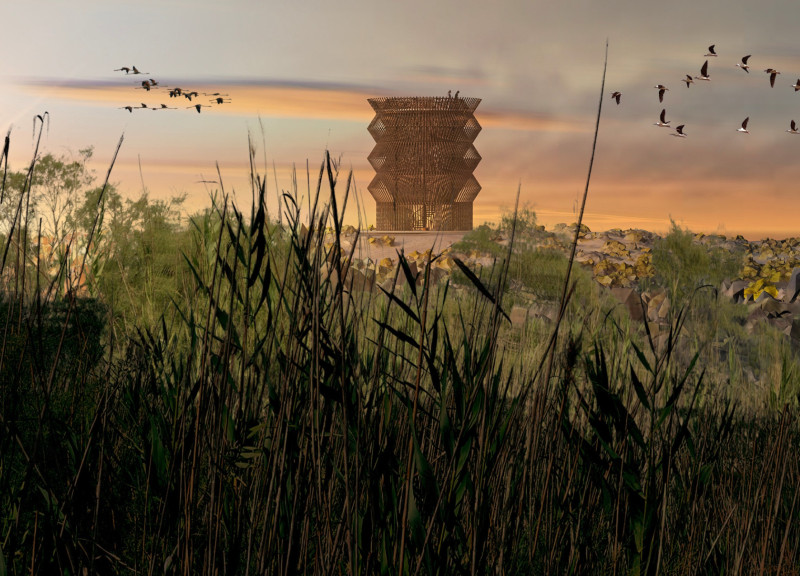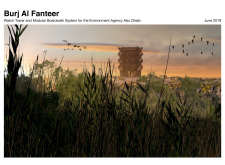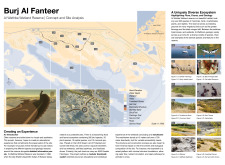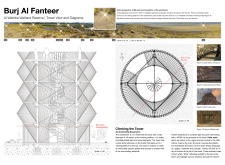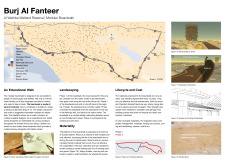5 key facts about this project
Burj Al Fanteer is a meticulously designed architectural project located in the Al Wathba Wetland Reserve in Abu Dhabi, UAE. Serving as an educational watchtower, this structure aims to facilitate visitor engagement with the local ecology while enhancing awareness about environmental preservation. The project reflects a commitment to sustainability, adaptability, and inclusive design.
Environmental Education and Interaction
The primary function of Burj Al Fanteer is to provide a platform for environmental education within a natural setting. The watchtower, standing at 12 meters with an 18-meter diameter viewing platform, is constructed from prefabricated steel and wood. Its form draws inspiration from local flora, particularly palm trees, creating a visual connection between the structure and its landscape. The internal spiral staircase ensures that visitors can easily reach the observation area while immersing themselves in the surroundings.
The modular boardwalk, spanning over 700 meters, enhances accessibility with a design that accommodates visitors with differing mobility needs. This pathway is crafted from wooden planks and Cleartech Bonded Sand, offering a durable and environmentally responsible surface that integrates seamlessly into the wetland environment. Informational panels along the boardwalk provide educational content about the local ecosystem, guiding visitors through a meaningful understanding of the area’s biodiversity.
Innovative Design Features
One of the defining aspects of Burj Al Fanteer is its integration of smart technology. The use of angle-adjusting mirrors within the watchtower allows visitors to focus on specific landscape features, elevating the interactive experience. This approach not only encourages learning but also highlights the architectural responsiveness to the environment.
The design is modular, allowing for flexibility in adjusting boardwalk segments based on changing environmental conditions. By utilizing sustainable materials such as recycled components, the project minimizes its ecological footprint while promoting long-term resilience. The architecture serves not only as a lookout point but also as an emblem of environmental stewardship and community engagement.
Sustainability as a Core Principle
Sustainability is a fundamental principle guiding the design of Burj Al Fanteer. The careful selection of materials, such as prefabricated steel and natural wood, fosters durability while complementing the aesthetic of the wetlands. The modularity of the construction allows for future adaptations, ensuring that the structure remains relevant in its utility over time.
By focusing on environmental compatibility and educational impact, Burj Al Fanteer exemplifies a mindful design approach that addresses contemporary ecological challenges. Its combination of form, function, and sustainability positions this project as a vital resource for both education and appreciation of the natural world.
Explore further by reviewing the project's architectural plans, architectural sections, and architectural designs to gain deeper insights into the innovative ideas that underpin Burj Al Fanteer. This exploration will provide a comprehensive understanding of how this project integrates architecture and nature for educational purposes.


